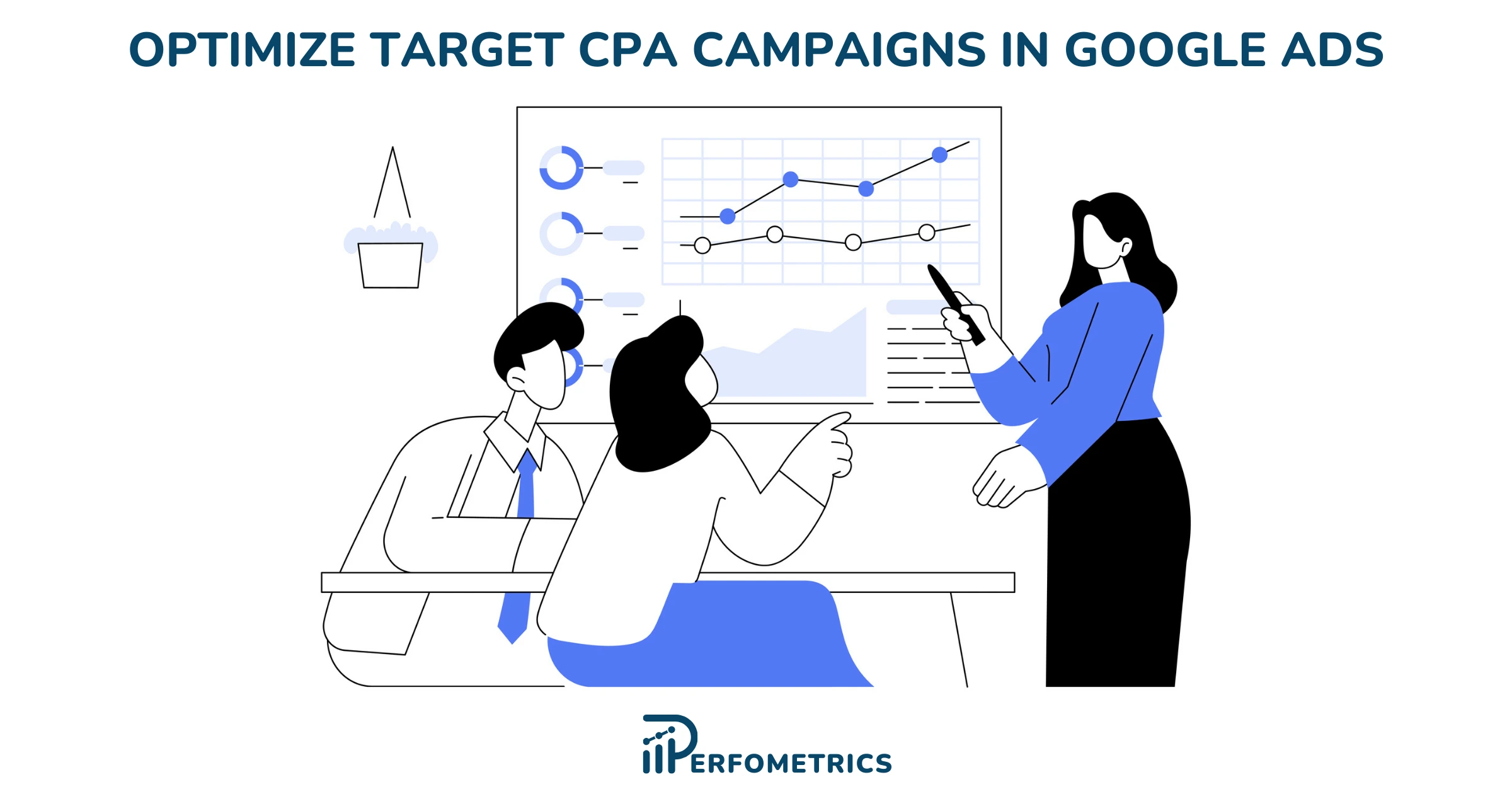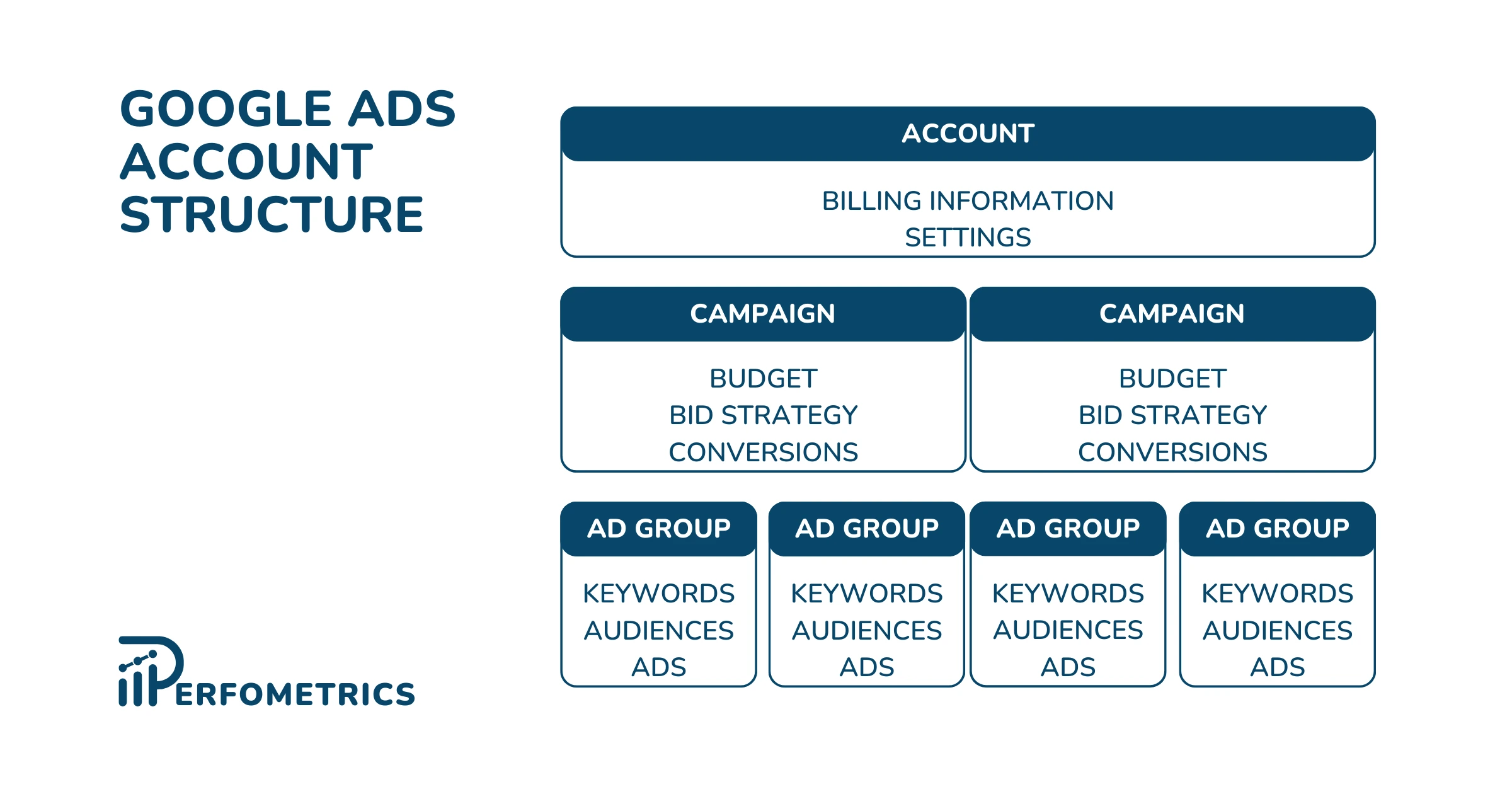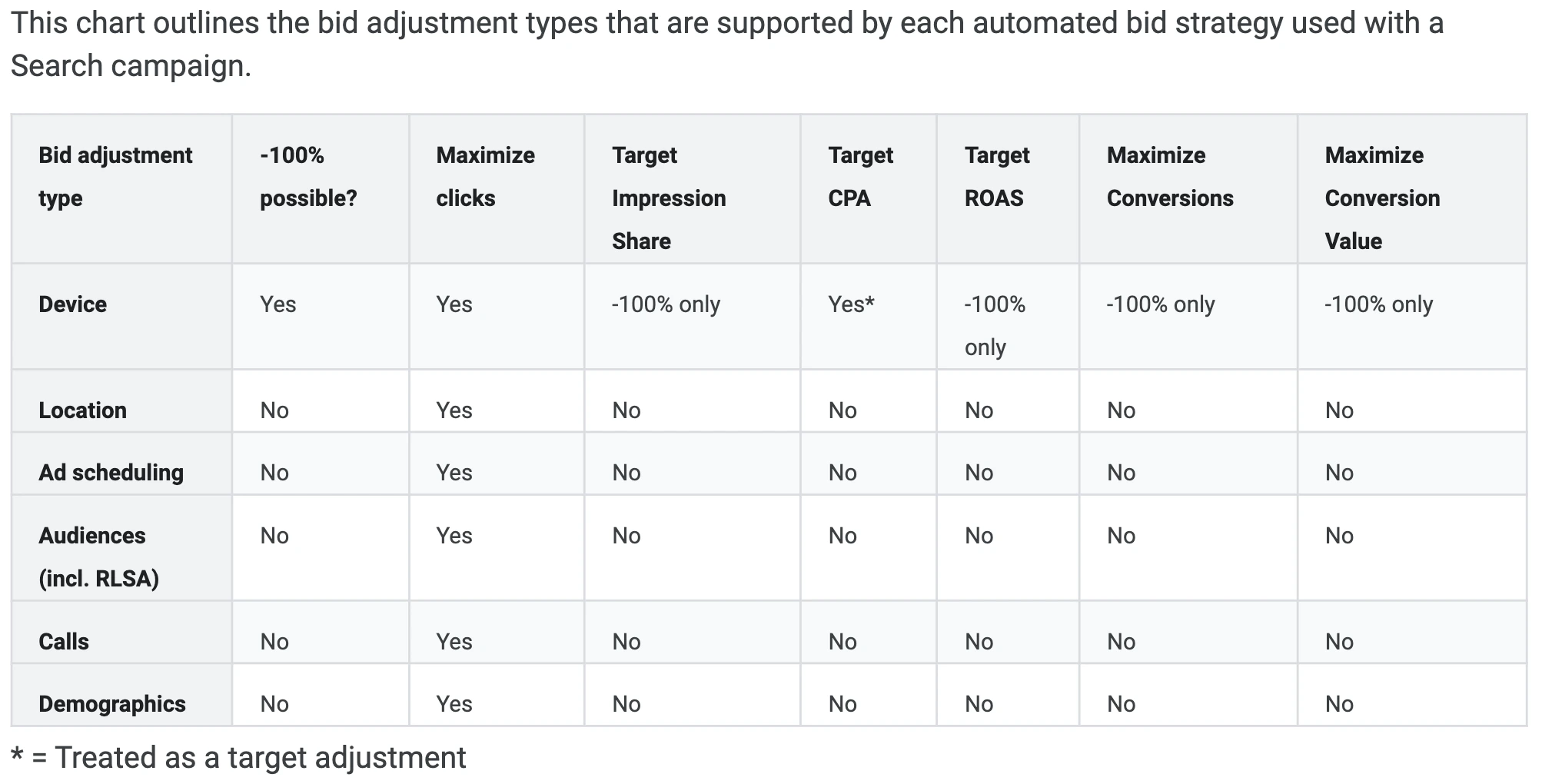How To Optimize Target CPA Campaigns in Google Ads

Among the various bidding strategies available in Google Ads, Target CPA stands out as a powerful tool for those seeking to balance conversions with cost control.
This automated bidding strategy allows you to set a maximum cost-per-action (CPA) for each conversion you want to achieve, ensuring that your ad spend remains within your budget while driving valuable customer actions.
Are you looking to reduce the CPA of your campaigns or maximize the volume of conversions for a target CPA?
You can optimize the performance of your Target CPA campaigns by carefully refining your campaign structure, focusing on high-performing keywords, implementing effective negative keyword strategies, targeting the right audiences, reducing ineffective targeting options, refining ad copy and extensions, and optimizing your landing pages.
How To Optimize Target CPA Campaigns in Google Ads
1. Review Campaign Structure
Before embarking on the optimization journey, a crucial step is to examine the foundation of your Target CPA campaigns – the campaign structure. This entails carefully evaluating the organization of your campaigns, the arrangement of ad groups, and the selection of keywords or audiences.
Why is Campaign Structure Important?
A well-structured campaign serves as the cornerstone of effective optimization. It ensures that your campaigns are aligned with your marketing objectives, target the right audience, and focus on the most relevant keywords. A disorganized campaign structure can hinder performance, leading to wasted ad spend and missed conversion opportunities.

With a proper campaign structure, you can expect your Target CPA campaigns to:
- Improve Ad Relevance: A well-structured campaign ensures that your ads are relevant to the specific keywords and search terms that users are using. This increases the chances of your ads being clicked and leads to higher conversion rates.
- Reduce Wasted Spend: By grouping related keywords and targeting specific audiences, you can eliminate irrelevant clicks and wasted ad spend. This helps you optimize your campaign’s performance and achieve a better return on your advertising investment.
- Enhance Targeting: A structured campaign allows for more precise targeting of specific demographics, interests, and behaviors. This ensures your ads reach the right people, increasing the likelihood of conversions.
To optimize your campaign structure for Target CPA bidding:
- Define Clear Campaign Goals: Clearly define the objectives of each campaign. What specific actions or conversions do you want to achieve? Having clear goals will guide your campaign structure and targeting decisions.
- Organize by Product or Service: Group related keywords, audiences, ads, and ad groups based on your products or services. This will make ad delivery more targeted and relevant to the user’s search intent.
By following these guidelines and tailoring your campaign structure to your specific business goals and target audience, you can significantly improve the performance of your Target CPA campaigns and achieve your conversion goals effectively and efficiently.
2. Focus on the Right Keywords:
This applies mostly to Search campaigns where keywords are used for targeting. With the Target CPA bidding strategy, you can’t adjust the bids on the keywords level, but you can select what keywords you are going to target, exclude, and their match type.
If you are looking to expand the campaign, generate more conversions, and increase spending while still maintaining a similar CPA you may want to add new keywords or test out phrase or broad match type keywords.
On the other hand, if you are looking to lower the CPA, you may want to focus on more specific keywords that bring performance and add negative keywords to exclude any bad apples or irrelevant keywords.
Maximize Best-Performing Keywords
Harnessing the power of your best-performing keywords offers several benefits:
- Higher Conversion Rates: Prioritize keywords that have a proven history of generating conversions. This ensures that your ad spend is allocated to the most effective keywords, driving a higher return on your investment.
- Improved Cost-Per-Acquisition (CPA): By focusing on high-converting keywords, you can reduce your CPA, making your Target CPA campaigns more profitable and efficient.
- Targeted Ad Delivery: By focusing on relevant keywords, you can ensure that your ads are seen by users who are more likely to be interested in your products or services, leading to higher engagement and conversions.
To identify your best-performing keywords, utilize Google Ads’ performance reports. Analyze metrics such as conversion rate, click-through rate (CTR), and average cost-per-acquisition (CPA) to identify keywords that consistently deliver positive results.
By focusing on your best-performing keywords, you can significantly enhance the performance of your Target CPA campaigns, achieve your conversion goals, and maximize your return on ad spend.
Add Negative Keywords
To maximize your Target CPA performance excluding negative keywords in Google Ads and focusing on the right keywords will be key.
Note: Make sure you add negative keywords and continuously update them. This will guide the algorithm and help you improve the performance of your search campaigns.
By adding irrelevant or low-performing keywords to your negative keyword lists, you can ensure that your ads only appear for the most relevant searches, leading to higher conversion rates and improved ROI.
Implementing negative keyword strategies offers several benefits:
- Reduce Irrelevant Clicks: Negative keywords help you eliminate irrelevant searches, preventing your ads from showing for users who are unlikely to be interested in your products or services. This reduces wasted ad spend and improves your targeting accuracy.
- Improve Conversion Rates: By ensuring that your ads are only shown to relevant users, you can increase the chances of clicks converting into conversions. This leads to a higher overall conversion rate and a more efficient use of your ad budget.
- Preserve Ad Relevance: Negative keywords help maintain the relevance of your ads, ensuring that they are seen by users who are actively searching for the products or services you offer. This improves user experience and enhances the overall effectiveness of your campaigns.
To effectively add negative keywords to your campaigns, follow these steps:
- Identify Irrelevant Search Terms: Analyze your Google Ads Search Terms reports to identify frequently searched terms that are not relevant to your products or services. These terms can be added as negative keywords to prevent your ads from showing for those searches.
- Use Negative Keyword Lists: Create negative keyword lists at the campaign, ad group, or keyword level. This allows for granular control over which search terms are excluded from your ad delivery.
- Leverage Google Ads Keyword Planner: Use Google Ads Keyword Planner to identify common search terms related to your products or services. These terms can be added as negative keywords to prevent irrelevant traffic.
Use Correct Keyword Match Types
By carefully selecting the appropriate keyword match types, you can refine your ad targeting, improve conversion rates, reduce wasted ad spend, and maximize the ROI of your advertising efforts.
To select the appropriate keyword match types for your Target CPA campaigns, consider the following factors: keyword relevance, campaign goals, budget, and competition.
Choosing the right keyword match types offers several benefits:
- Precise Targeting: Proper keyword match types allow you to target specific search terms and phrases, ensuring that your ads are shown to users who are actively searching for products or services that align with your offerings.
- Reduced Wasted Spend: By selecting the most restrictive match types for irrelevant keywords, you can prevent your ads from showing for irrelevant searches, reducing wasted ad spend and improving your overall return on investment (ROI).
- Improved Ad Relevance: Accurate keyword match types maintain the relevance of your ads, ensuring that they are seen by users who are genuinely interested in what you have to offer. This enhances user experience and improves conversion rates.
Broad match triggers your ads for searches that include the specified keyword or any of its variations, which can lead to irrelevant impressions. Phrase match triggers your ads for searches that include the specified keyword phrase in the exact order, while exact match triggers your ads only for searches that are an exact match for the specified keyword or phrase.
3. Target the Right Audiences
Targeting the right audience is crucial for maximizing the success of your Target CPA campaigns. By understanding the demographics, interests, and behaviors of your ideal customers, you can tailor your ad messaging and targeting options to reach the right people at the right time, leading to higher conversion rates and improved ROI.
This adjustment will be applicable to most of the campaigns, as long the audience is set up to “targeting” compared to “observing”.
The changes will depend on what your objective is, if you are looking to expand the campaign, then you may want to look into adding additional relevant audiences to target and potentially increase the reach of the audiences.
If you are trying to further lower the target CPA then you may want to narrow down on the best-performing audience, limit the reach in the audience setting, and adjust the audience criteria to the best-performing criteria. The same applies to the demographics. Adjust the gender, age, and parental status according to your objective.
For more details, check out our detailed article on Google Ads audiences.
Effective audience targeting offers several benefits:
- Increased Conversion Rates: By reaching the right people, you can increase the likelihood of clicks converting into conversions.
- Reduced Wasted Spend: By targeting specific demographics, interests, and behaviors, you can prevent your ads from being shown to irrelevant users, reducing wasted ad spend and improving your targeting accuracy.
- Enhanced ROI: By reaching the right people, you can maximize the return on your investment (ROI) by generating more conversions from your Target CPA campaigns.
4. Reduce Bad-Performing Targeting
Identifying and eliminating ineffective targeting options is crucial for optimizing your Target CPA campaigns and maximizing their effectiveness. By refining your targeting parameters, you can ensure that your ads are shown to the most relevant users, leading to higher conversion rates and improved ROI.
Placements & Topics
Changes to the placements and topics are only relevant to Display and Video campaigns. The principle is again the same, if you are looking to expand, generate more conversions, and still maintain a similar CPA then look into adding more placements and/or topics to target.
- Review Placements: Analyze the performance of your ads across different placements, such as Search Network, Display Network, and YouTube. Identify placements that are underperforming and consider removing them from your campaigns.
- Explore Topics: Leverage topic targeting to refine your ad delivery. Identify high-performing topics and focus your targeting on those topics. Similarly, exclude low-performing topics to prevent irrelevant impressions.
If you need ideas for placements to target, check the “Where ads showed” section to see on which pages/apps/YouTube videos/channels your ads have appeared. You can sort by performance and include those in your targeting. For topics, you can apply the same logic.
Note: just like with the keywords, you can also add placements and topics as negatives. This can guide the campaign on the right course and deliver the best results.
Locations
Making adjustments in your locations can be a big game changer and it applies to almost all of the campaign types in Google Ads.
- Analyze Location Performance: Assess the performance of your ads across different locations. Identify locations with low conversion rates or high costs and consider pausing or excluding those locations.
- Target Specific Locations: Focus on locations that are aligned with your target audience and campaign goals. Use precise location targeting options to reach the right users in the right places.
Whether you’re looking to maintain or lower the CPA of your Google Ads campaigns, expanding or decreasing the radius and/or the number of locations you are targeting can help you expand or narrow down the campaign according to your objective.
With the locations you can also exclude the ones you don’t think will perform well or places where your business is not operating/serving but the same language is spoken.
Devices
There are mainly 4 different devices available in Google Ads, phone, tablet, desktop, and TV screen.
- Monitor Device Performance: Analyze the performance of your ads across different devices, such as desktop, mobile, and tablet. Identify devices with low conversion rates or high costs and consider adjusting your targeting strategies accordingly.
- Optimize for Specific Devices: Prioritize targeting devices that are most relevant to your campaign goals. For instance, if you’re targeting a younger audience, prioritize mobile targeting.
If you want to reach the most customers possible and generate as many conversions within the defined CPA aim to be present on as many devices as possible.
If you are aiming to optimize the campaign and maximize the conversion volume by reducing the target CPA of your Google Ads campaign, then focus on the devices that work best for you.
Ad Schedule
Making adjustments to the time your ads show can also be a real help when optimizing your campaign. You want to monitor when your campaign is performing the best. What hours of the day and what days of the week? You can adjust and tweak them according to your goal.
- Analyze Ad Schedule Performance: Evaluate the performance of your ads across different times of the day and days of the week. Identify periods with low conversion rates or high costs and consider adjusting your ad schedules accordingly.
- Optimize for Specific Times and Days: Optimize your ad schedules to focus on times and days when your target audience is most active. For instance, if your target audience is working professionals, prioritize ad delivery during weekdays.
If you are trying to grow the campaign, increase spending, and generate more conversions, test different hours and find the ones that work the best within your target CPA.
Otherwise, if you are trying to narrow down your campaign, lower the CPA, maximize conversions, and improve KPIs, put focus only on the hours and days that bring you the best results at the desired CPA.
Languages
The language setting can be a subtle change but can still help you with your campaign performance. It’s recommended to keep it as open as possible, however in cases where the language must match the customer because of the product or service offered, then it can be a useful add-on.
- Analyze Language Performance: Assess the performance of your ads in different languages. Identify languages with low conversion rates or high costs and consider excluding those languages from your campaigns.
- Target Specific Languages: Focus on languages that align with your target audience and campaign goals. Use precise language targeting options to reach the right users who understand your ad messaging.
If you are targeting multiple languages or even all languages you are open to the maximum number of customers possible. But if you are specific with only a selected language then your targeting is limited to only those customers and your performance should be a bit more optimized.
By carefully analyzing the performance of your campaigns across different targeting parameters, you can identify ineffective targeting options and eliminate them. This will help you focus your ads on the most relevant users, leading to higher conversion rates, reduced wasted ad spend, and improved ROI.
5. Refine the Ads and Extensions
Effective ad copy and relevant extensions are essential for attracting clicks, driving conversions, and maximizing the performance of your Target CPA campaigns.
By carefully crafting your ad messages and utilizing Google Ads extensions (assets) strategically, you can boost the visibility and impact of your ads, leading to higher conversion rates and improved ROI.
Improving Ad Copy:
- Clarity and Conciseness: Your ad copy should be clear, concise, and easily understandable. Avoid using jargon or complex language that might confuse potential customers. Keep your messaging focused on the key benefits and value propositions of your products or services.
- Benefit-Focused: Highlight the tangible benefits that your offerings provide to your target audience. Explain how your products or services can solve their problems or address their needs. Emphasize the unique selling points that differentiate your offerings from competitors.
- Compelling Calls to Action: Include a clear and persuasive call to action that encourages users to take the desired action, such as visiting your website, making a purchase, or signing up for a newsletter. Use strong verbs and make your call to action stand out from the rest of your ad copy.
- A/B Testing and Optimization: Experiment with different ad copy variations to identify which elements resonate best with your target audience. Utilize Google Ads’ A/B testing feature to make data-driven decisions about your ad copy, optimizing it for maximum effectiveness.
By refining your ad copy and following our best practices for Google Ads (assets) extensions, you can create more compelling ad experiences, improve user engagement, and drive higher conversion rates for your Target CPA campaigns.
Regardless of what type of strategy the campaign is using, your goal will always be to optimize and create the best ads possible. Keep experimenting with different headlines, descriptions, images, videos, and ad extensions.
To see which headlines and descriptions are working the best in your responsive ads and which ones need updating, check the Google Ads Assets Report.
6. Apply Bid Adjustments to Ad Groups
While bid adjustments allow you to fine-tune your bids for specific keywords, devices, times of day, locations, and audience segments, most of the foundational bid adjustments won’t apply to an automated bidding strategy such as Target CPA.
However, you can apply strategic bid adjustments on ad group levels and optimize your campaigns to achieve your desired Target CPA.

By carefully applying bid adjustments on ad group levels, you can fine-tune your Target CPA campaigns and ensure that your ad spend is effectively targeted towards the most relevant and high-converting users. This can significantly improve your conversion rates, reduce wasted ad spend, and maximize your overall ROI.
Check out our in-depth article to learn more about Google Ads bid adjustments.
7. Optimize Your Landing Page
Your landing page is the destination for users clicking on your ads, and it’s crucial to optimize it for conversions. By creating a landing page that is relevant, user-friendly, and optimized for conversions, you can significantly improve the performance of your Target CPA campaigns.
Key Elements of an Effective Landing Page
- Relevant and Consistent: Your landing page should be highly relevant to the ad copy and keywords that users are clicking on. Ensure that the messaging and visuals on the landing page match the expectations set by your ads.
- Clear Call to Action: Include a clear and compelling call to action that encourages users to take the desired action, such as making a purchase, signing up for a newsletter, or scheduling a consultation. Make the call to action stand out visually and use strong verbs.
- Easy Navigation: Ensure that your landing page is easy to navigate and that users can easily find the information they are looking for. Use a clear and organized structure, and limit distractions that could hinder conversions.
- Mobile Optimization: Optimize your landing page for mobile devices, as a significant portion of traffic will likely come from mobile users. Ensure that the layout and functionality are optimized for smaller screens.
- Visual Appeal: Use high-quality images and videos that are relevant to your products or services. Visuals can help capture attention, convey information effectively, and enhance the overall user experience.
- Speed and Performance: Ensure that your landing page loads quickly and smoothly. Page load times can significantly impact conversion rates. Use lightweight images, optimize code, and leverage caching techniques.
- Social Proof: Include social proof elements, such as customer testimonials, positive reviews, or badges of trust, to build credibility and encourage conversions.
- Lead Nurturing: If you are collecting leads on your landing page, make sure that your lead nurturing process is effective. Nurture leads with valuable content and personalized interactions to increase the likelihood of conversion.
Follow our landing page best practices for Google Ads to improve the performance of your landing page, Target CPA campaign, drive more conversions and maximize your overall ROI.
Monitoring and Optimizing Target CPA Campaigns
Effective optimization of Target CPA campaigns requires continuous monitoring of campaign performance. By regularly analyzing key metrics and identifying areas for improvement, you can make data-driven decisions that drive continuous growth and maximize campaign effectiveness.
Monitoring Key Metrics:
- Conversion Rates: Monitor conversion rates across different elements of your campaigns, such as keywords, ad groups, and landing pages. Identify areas where conversion rates are low and make adjustments to improve performance.
- Cost per Acquisition (CPA): Track your CPA across different campaigns and periods to ensure that you are achieving your target CPA goals. Make adjustments to bids, targeting, or landing pages as needed to keep CPA in line with expectations.
- Search Impression Share: This is only applicable to Search and Performance Max Campaigns. Monitor your search impression share to understand how your bids and competition are affecting your ad visibility. Adjust bids or targeting as needed to improve your visibility and reach more relevant users.
- Quality Score: Monitor your Google Ads Quality Score for keywords and ad groups. All of these optimizations to your Target CPA campaign will lead to a high-quality score which can then lead to lower CPCs, higher ad placements, and improved conversion rates. Identify and address low-quality keywords, refine the ads, and optimize the landing pages to improve overall campaign performance.
- User Behavior: Analyze user behavior metrics such as bounce rate, average session duration, and time on site to understand how users are interacting with your landing pages. Make adjustments to landing pages or messaging to improve user engagement and conversion rates.
Continuous Improvement:
- A/B Testing: Regularly A/B test different elements of your campaigns, such as ad copy, landing page layouts, and call to actions, to identify what resonates best with your target audience.
- User Feedback: Gather feedback from real users through surveys or analytics to understand their experiences and identify areas for improvement.
- Benchmarking: Compare your campaign performance against industry benchmarks to identify opportunities for improvement.
- Stay Updated: Stay up-to-date with the latest trends in digital marketing, user behavior, and campaign optimization techniques to ensure your campaigns remain effective.
By continuously monitoring and making improvements to your Target CPA campaigns, you can achieve long-term success and drive consistent growth in your business.
Our Final Thoughts
- Review Campaign Structure: This entails carefully evaluating the organization of your campaigns, the arrangement of ad groups, and the selection of keywords and/or audiences.
- Focus on the Right Keywords: Identify and prioritize keywords with high conversion rates to maximize ad spend efficiency. Use precise match types to ensure your ads are shown for relevant searches and eliminate irrelevant impressions. Exclude bad-performing or irrelevant keywords with negative keywords.
- Target Relevant Audiences: Define and target specific demographics, interests, and behaviors to reach the right users for your campaigns.
- Reduce Bad-Performing Targeting: Eliminate placements, topics, locations, devices, ad schedules, and languages that are underperforming.
- Refine Ads and Extensions: Optimize ad copy and extensions for clarity, conciseness, benefits-focused messaging, strong calls to action, and A/B testing.
- Optimize Landing Pages: Ensure landing pages are relevant, easy to navigate, mobile-optimized, visually appealing, fast-loading, social proof-backed, and lead nurturing-enabled.
- Apply Ad Group Bid Adjustments: Strategically adjust bids for devices, and ad groups to maximize campaign efficiency.



